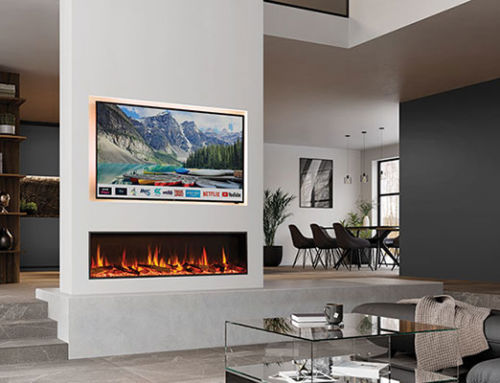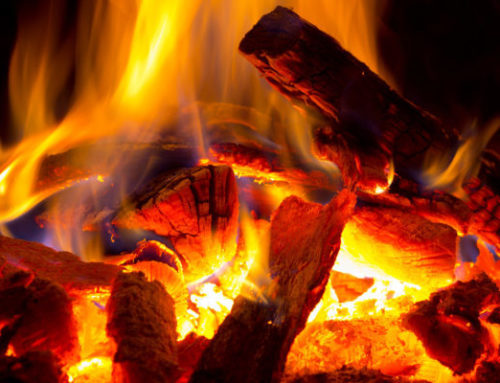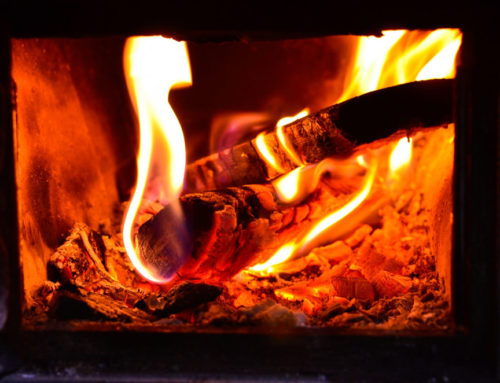Why should I install a closed-combustion Fireplace?
Fireplaces are a great way to heat a home and create an equally wonderful ambience for either a quiet night at home or entertaining friends around a crackling fire.
Many of us have grown up with open fireplaces and like the nostalgia and therapeutic effect of a fire.
The quandary for many people is, should I have an open fire or closed combustion fireplace? What exactly is the difference and what am I paying for?
Open fireplaces
Open fireplaces come in a wide variety of styles and sizes, from very plain to extremely ornate. The one thing they have in common is that the front of the fireplace is left open, wood or coal is placed in a grate, and the smoke escapes through the chimney. Well, most of it does anyway, unfortunately along with most of the heat. Invariably, the rest of the smoke finds a path for itself through the house and leaves everything smelling murky.
The fire has to be fed frequently, and when it finally goes out, there remains quite a lot of ash to be removed. It is often quite a pain to clean these fireplaces, with unburnt wood or coal that has to be removed along with the ash and the grate and hearth need to be brushed and cleaned out after every fire.
The worst disadvantage of an open fire, however, is the fact that up to 90% of the heat escapes straight up the chimney. An open fire can never be left alone, for fear of sparks and hot coals setting your home alight.
The technology of the 21st century has provided us with a superlative option that retains all the joy and advantages of a companionable fire in the home, with virtually none of the downside.
Closed-combustion fireplaces
Technologically advanced closed-combustion fireplaces have become very popular, and with good reason. Closed combustion fireplaces come in an even wider variety of models and sizes. Designs vary from antique to ultra-modern, which can be integrated seamlessly into any architectural style. Sizes range from a stove suitable to heat a small apartment, to stoves with a high heat output for warehouse-sized rooms or two-sided access between rooms.
To fit different designs and décor, you can choose anything from a free-standing model in the middle of the floor, to free-standing models against a wall or in a corner, to integrated fireplaces that are inserted into the wall or other architectural structure. Free-standing models can be mounted on a wall, on the floor, on a stand, or suspended from the ceiling.
The term, closed-combustion fireplaces, includes wood-burning stoves and fireplaces, those fuelled by gas, or electricity and even hybrid models using more than one type of fuel.
Most of the closed-combustion fireplaces and stoves at the top-en of the market are manufactured from cast iron, steel, or stainless steel. Generally, the cast-iron models carry a much more extended warranty and are better suited for larger areas, while steel or stainless-steel models may be better suited for smaller spaces or multiple-use combination fireplaces and BBQ’s.
Closed-combustion fireplaces are distinguished by the fact that they have fire-resistant glass (often ceramic glass) doors or windows that contain the fire within the stove or fireplace and are equipped with adjustable controls to precisely regulate the fire. They also have modern flue systems that retain the heat, instead of it escaping through the chimney. The glass doors and windows ensure you can still enjoy the full impact of dancing flames and the sound of a crackling fire. Modern “airwash” technology keeps the windows clean for an unimpeded view of the fire.
A high-end closed combustion fireplace burns cleanly and thoroughly, retaining as much as 90% of the heat. Most of these fireplaces have a sophisticated secondary combustion system that burns any remaining fuel or combustible gases for a second time in a separate chamber to the primary burner. Some are combined with forced-air systems (like a furnace) to further increase the heat output. This means that it actually burns only one-third of the fuel to provide the same heat output as an open fire while giving off hardly any smoke, soot or residue.
Because the heat is contained within the fireplace, the air is taken in from outside the house, and then recirculated within the stove, the heat is in a way turned back on itself (called refraction) causing much higher combustion temperatures, transferring the heat into the room instead of escaping up the chimney.
Cost of closed-combustion fireplaces
Because of the complexity of their construction and the materials used, closed-system fireplaces are more expensive than traditional open fireplaces, but it will quickly earn its keep and pay for itself. In the long term, the saving on fuel alone will pay for the fireplace. A closed-combustion fireplace uses about one-third of the wood consumed in an open fireplace.
You will also save on cleaning and maintenance costs. The flue system has to be cleaned only once a year with regular use. There is very little ash and residue left, and whatever there is, is caught in an ashpan that is easily removed and emptied. Minimal cleaning is required for the grate and hearth.
The best quality wood-burning stoves will last for many generations if properly cared for and will add significantly to the resale value of your property, and you will get your money back when you sell your house.
Other benefits of closed-combustion fireplaces and stoves
- Apart from fuel efficiency, there are some other advantages to closed-system fireplaces:
- Far superior heat output, which can be controlled effectively.
- It burns slower at a higher heat and does not have to be fed as often as an open fire.
- Because closed system fireplaces are sealed, you won’t have to deal with smoke or soot filling your house.
- Closed system fireplaces are much safer than open fires, because there is no risk of sparks igniting nearby fabric or carpet.
- Fire gates are available to keep children and pets safe.
- Closed system fireplaces are designed to be used in smoke-free zones, with extremely low smoke emission.
- The modern flue systems are intended for external air intake, ensuring the oxygen levels in your home are not depleted by the burning fire.
- The top-quality fireplaces are fitted with sizeable fire-resistant glass doors or windows. Depending on the model you choose, you will have an unimpeded view of the fire on one, two, or three sides.
- Modern technology, called airwash, keeps the glass clean.
- Because closed-system fireplaces are so fuel-efficient, very little ash or residue is leftover from the wood. It is only necessary to clean the stove and remove ash about once or twice a week. The ash is good for your garden.
- Extremely efficient flue systems have been developed to minimise creosote or soot build-up, reducing the need for cleaning.
- You have the choice of flue outlets on top, at the back, or on the side. Some models offer multiple options. This means that the new stove can be inserted in an existing fireplace, with the flue feeding into the existing chimney, or can be installed in a spot of your choosing.
- The stove will retain its heat for hours after the last loading, keeping your home warm while you are sleeping.
- In areas without electricity, or with regular power outages, your closed-combustion stove will provide reliable heat and light.
- Modern closed-combustion stoves are available in a variety of colours to match your décor.
Multiple fuel options
- Some closed-system fireplaces are designed to burn wood only.
- Others can burn both wood and anthracite. Wood is generally preferable because it burns more cleanly than anthracite.
- Very attractive and efficient gas-fuelled closed-system fireplaces are also available with realistic flames.
- Although they are not combustion stoves, electric fireplaces with digitised flames have also become popular.
Why is it important to select precisely the right size closed-combustion fireplace or stove?
The need to install a stove large enough to heat up the entire room properly is self-evident. However, buying a stove that is too large is unwise as the temperature will be too high and will need to be controlled in ways that reduce the efficiency of the fireplace, such as reducing the airflow.
Closed-system stoves are most efficient when they are operating at the temperature for which they are designed. Cutting the flow of air means that the fireplace is not going to work as efficiently as it should, resulting in incomplete combustion of the fuel, wasting money and requiring additional cleaning. It also means that the glass and stove will become dirty, the flue will accumulate soot and more sooty particles will be released into the atmosphere.
Closed system fireplaces are the most effective way to heat your home as they only allow enough air into the fireplace to fuel the fire, thus creating heat retention of up to almost 90% in your home, versus a traditional open fireplace that retains only 10-15% of the heat.
For a rough guide to choosing the correct output for your fireplace, divide the size of the room in square metres (length x width) by 10 to get ideal kilowatt amount.
Ask the experts
Firehouse sells, installs, maintains all the top brands like Chesneys, Morso and Rocal.
Our professionally trained technical staff will assist you with the correct choice and advice on which stove will best suit your needs, while our design experts will help you with seamless integration of the fireplace into your particular décor.





